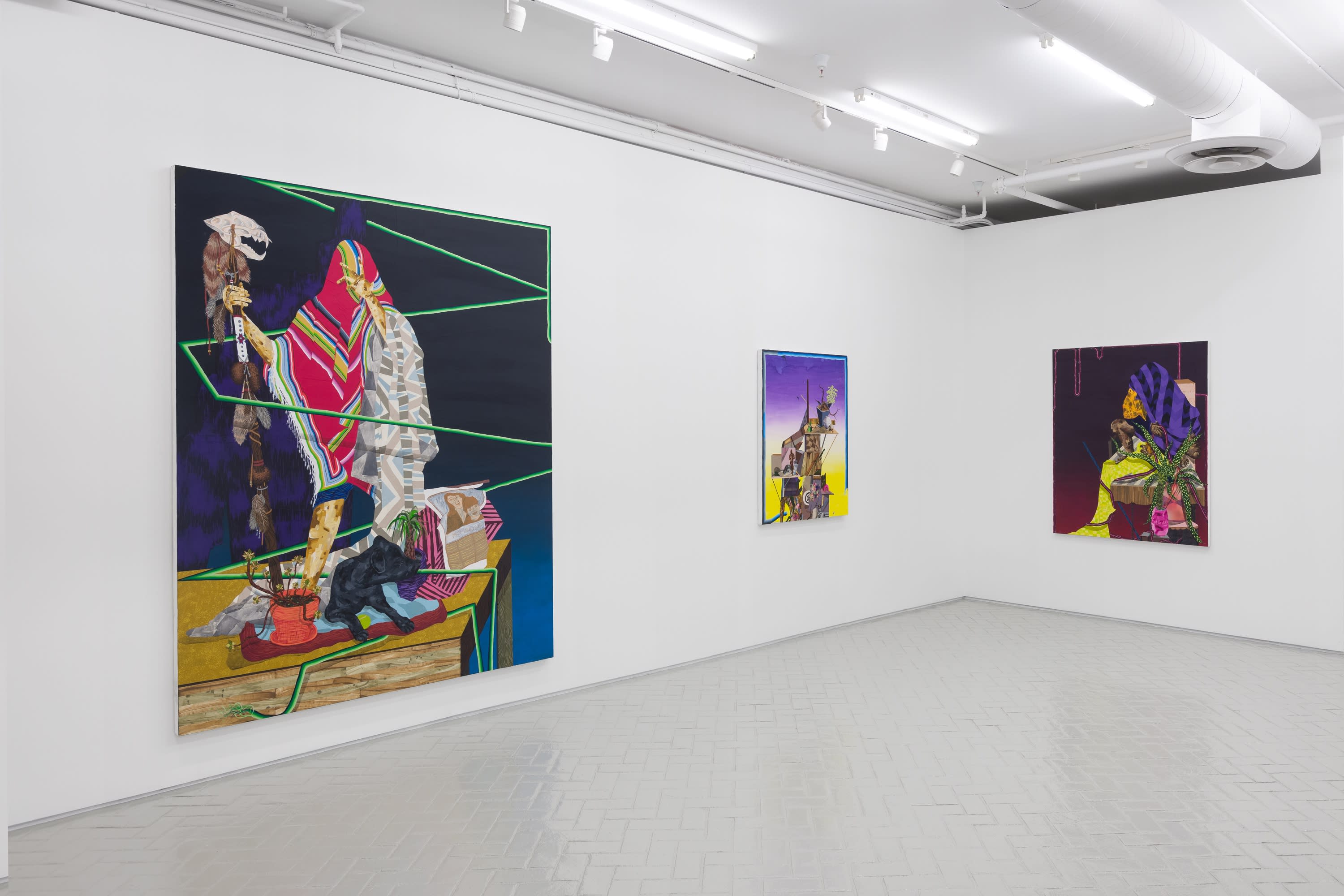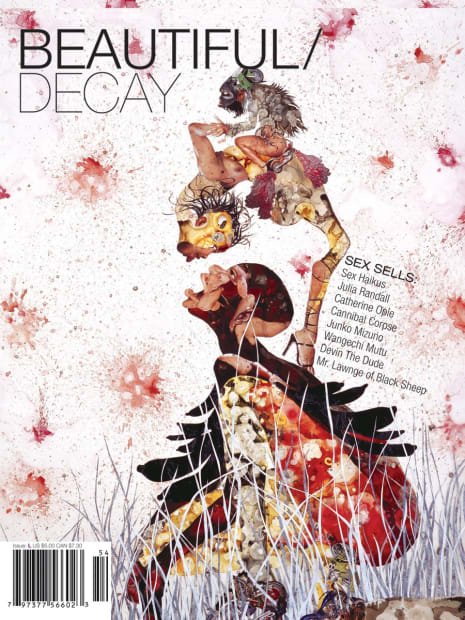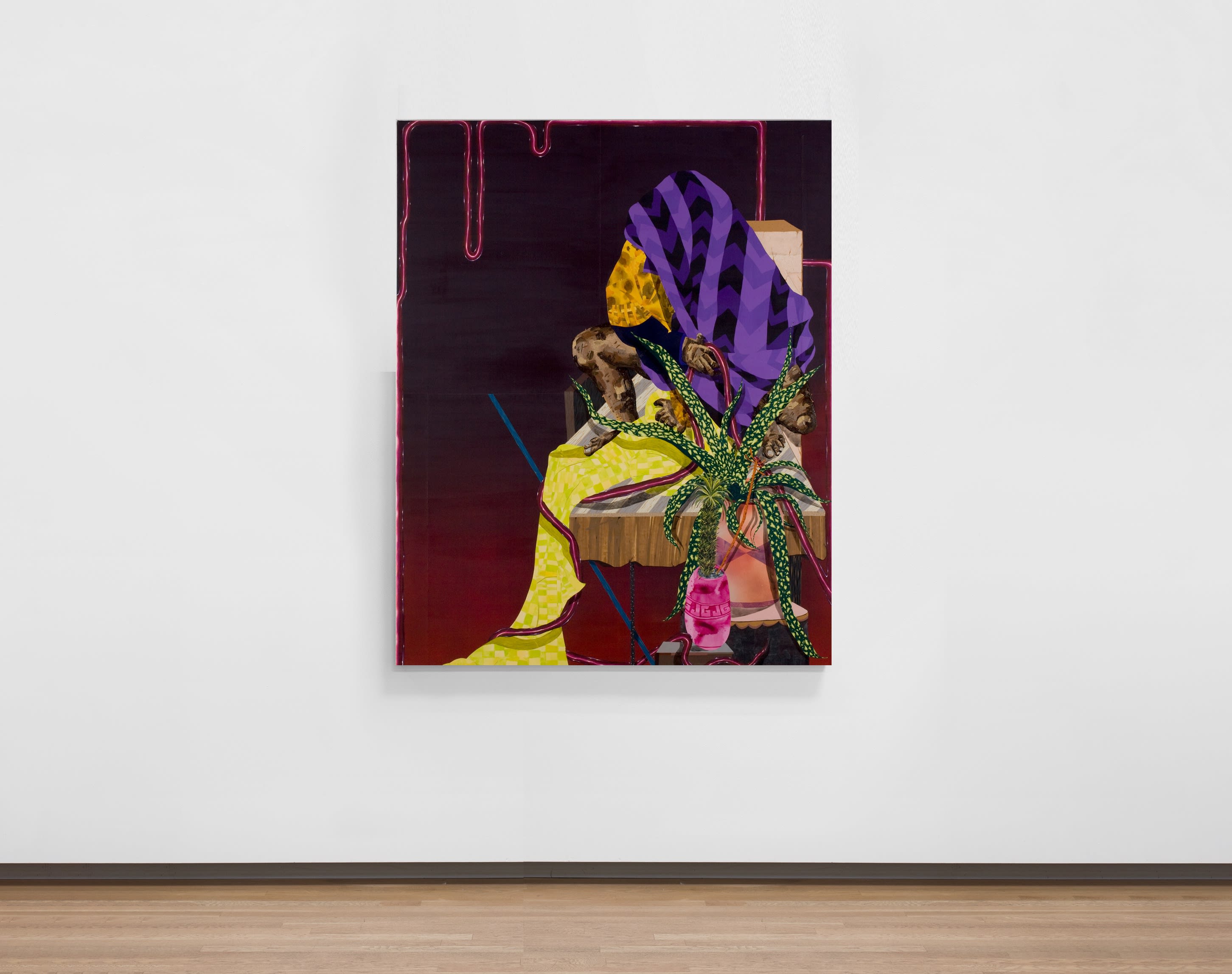Shulamit Nazarian is pleased to present Reflections and Returns, a solo presentation of early paintings from 2008–2011 by Los Angeles-based artist Amir H. Fallah. These works, which have never before been exhibited in the United States, illuminate the development of his acclaimed Veiled Portrait series, a body of work that interrogates systems of representation and portraiture in Western art history. In Reflections and Returns, paintings from Fallah’s Fort Series are combined with his earliest Veiled Portrait paintings. This presentation provides a rare glimpse into the earliest works of two significant series; core pieces that became building blocks to a prolific decade of his practice.
-

-
 Amir H. FallahThe Indigenous Hunting Ritual, 2011Acrylic, oil, ink, collage, and pencil on paper mounted to canvas96 x 72 in
Amir H. FallahThe Indigenous Hunting Ritual, 2011Acrylic, oil, ink, collage, and pencil on paper mounted to canvas96 x 72 in
243.8 x 182.9 cm -
Fallah’s Fort Series is an essential precursor to the artist's iconic Veiled Portrait works. Inspired by Fallah’s upbringing in the suburbs of Virginia, these paintings were developed in 2008, and sought to replicate childhood memories of time spent drawing, playing in the woods, and building forts. In The Lords, Baby Snatchers, and I Put You on a Pedestal #1, Fallah enlists pillows, tables, and books to reconstruct the haphazard spaces born from childhood imagination—homes, castles, and secret hideaways carefully assembled from domestic objects readily on hand.
-
 Amir H. FallahI Put You on a Pedestal #1 , 2008Acrylic on paper mounted to canvas60 x 48 in
Amir H. FallahI Put You on a Pedestal #1 , 2008Acrylic on paper mounted to canvas60 x 48 in -
-

-
-
-
Around 2010, Fallah pivoted his practice and began visiting the homes of people close, as a method to gather source material. He shares, “I would go to someone’s home, and I wasn’t sure of what I’d see. I was at the mercy of what they had in their house. It gave me material to be in dialogue with.” Manifested in the early Veiled Portrait works made in 2011—The Indigenous Hunting Ritual, First One to Trust, Last One to Live, and On Hand and Foot—are the early attempts to depict someone’s likeness without their physical presence, interrogating the broader forms of representation of their personhood.The crude nature of the paintings demonstrates Fallah’s experimentation in rendering subjects that were without obvious markers of identity or time—a move inspired by Francis Bacon’s depictions of figures situated in an undetermined space, time, or location. These figurative works amalgamate domestic objects, the border motif, and plants as an entry point to discuss personal history, race, the body, and cultural memories.
-

-
Reflections and Returns trace the experimental lineage that led to Fallah’s notable and current Veiled Portrait series. From the start, the artist’s impulse to capture the nostalgia of building childhood forts transformed into the beginning of his portrait practice, and more directly, a portrait of himself. In keeping with his investigation, he carries over the wooden platform structure of his Fort Series into his 2011 portraits: plants that once served as surrogates for the body are replaced with veiled human figures that sit atop a pedestal. Rather than depicting one’s physical features, Fallah charts one’s likeness through the objects a person chooses to keep in their homes. These Fort Series paintings and early Veiled Portraits propose an intimate reflection of our memories, one that recalls the significance of the items we identify with and carry forward in our lives.
-

-

Photo: Alan Shaffer









